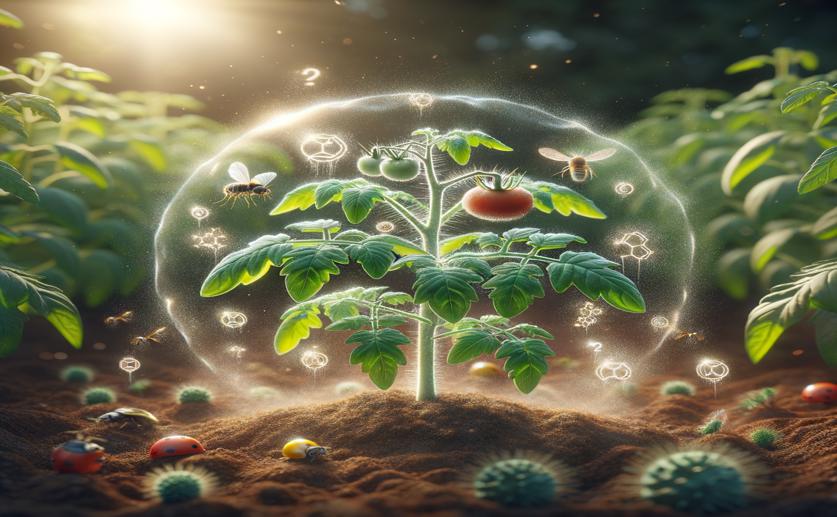
Nitrogen Helps Tomatoes Release Protective Compounds to Resist Pests
Jenn Hoskins
14th May, 2024

Image Source: Natural Science News, 2024
Key Findings
- Researchers at Sun Yat-sen University in Shenzhen, China, found that nitrogen content in tomato plants affects their defense against the tobacco cutworm
- Limited nitrogen in tomato plants increases resistance to the tobacco cutworm by boosting the production of a repellent compound, α-humulene
- Applying α-humulene to tomato leaves confirmed its effectiveness in deterring the tobacco cutworm, suggesting potential for natural pest control strategies
AgricultureBiochemPlant Science
References
Main Study
1) Nitrogen-mediated volatilisation of defensive metabolites in tomato confers resistance to herbivores.
Published 13th May, 2024
https://doi.org/10.1111/pce.14945
Related Studies
2) Insects betray themselves in nature to predators by rapid isomerization of green leaf volatiles.
3) Insecticidal activity of camphene, zerumbone and α-humulene from Cheilocostus speciosus rhizome essential oil against the Old-World bollworm, Helicoverpa armigera.
4) Terpenes and Terpenoids in Plants: Interactions with Environment and Insects.



 27th April, 2024 | Jim Crocker
27th April, 2024 | Jim Crocker